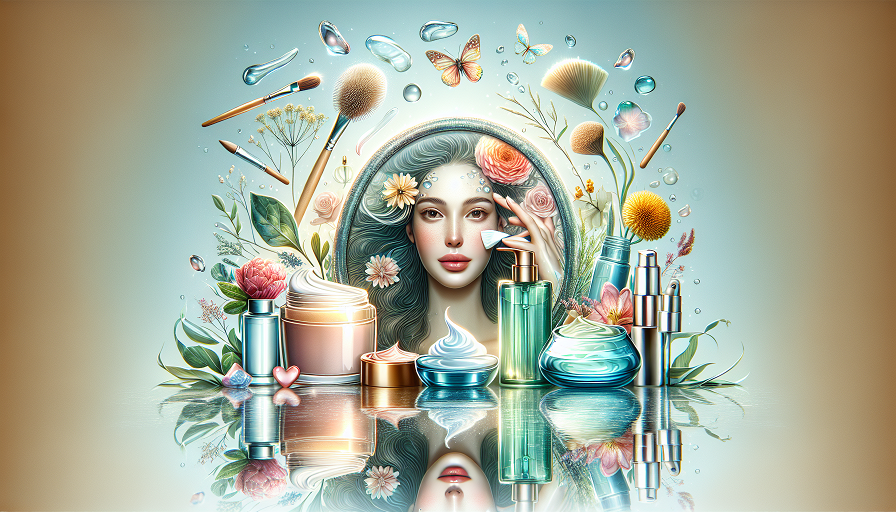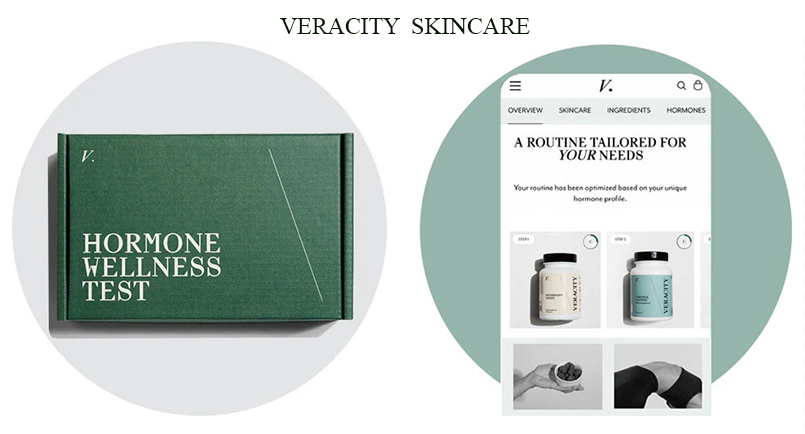
Hormones play a huge role in skin health, impacting everything from acne and elasticity to hydration and smoothness. While hormone imbalances can throw our bodies off, leading to breakouts or dryness, there’s good news: your diet can help. Eating the right foods can support hormone balance, which in turn benefits your skin, helping it look and feel healthier.
Contents
- Why Hormones Matter for Skin Health
- Protein-Packed Foods: Essential for Hormone Production
- Healthy Fats: Nourishing Hormones and Skin
- Fiber-Rich Foods: Supporting Detox and Hormone Metabolism
- Antioxidant-Rich Foods: Protecting Skin from Stress and Aging
- Managing Blood Sugar with Low-Glycemic Foods
- Spices and Herbs for Hormonal Health
- Putting It All Together: A Sample Day of Hormone-Friendly Eating
Why Hormones Matter for Skin Health
Hormones act as chemical messengers, telling your skin cells when to produce oil, how to maintain elasticity, and when to repair. When hormones are balanced, your skin reflects that harmony. But when hormone levels go haywire, issues like acne, wrinkles, and dullness can arise. The key to stable hormones is often in the food you eat, as certain nutrients and foods can influence hormone production and metabolism.
The Role of Key Hormones in Skin Health
Estrogen, testosterone, cortisol, and insulin are just a few hormones that impact your skin. Estrogen helps with collagen production and moisture retention, testosterone affects oil production, cortisol influences inflammation, and insulin is linked to blood sugar, impacting acne. Knowing how these hormones interact with your skin makes it easier to see why diet is a big deal in keeping your skin in top shape.
Protein-Packed Foods: Essential for Hormone Production
Protein is essential for producing the building blocks of hormones. Your body uses amino acids from protein to create hormones and enzymes that regulate many functions, including skin health. Choosing high-quality proteins helps your body maintain stable hormone levels, which translates to clearer, healthier skin.
Lean Meats and Fish
Chicken, turkey, and salmon provide lean protein without excessive fat. Fatty fish like salmon and mackerel also contain omega-3 fatty acids, which help reduce inflammation, balance hormones, and give your skin a more even tone.
Plant-Based Proteins
If you’re vegetarian or vegan, don’t worry. Foods like quinoa, lentils, chickpeas, and tofu provide plenty of protein to support hormone production. They’re also rich in fiber, helping to balance insulin levels, which can reduce breakouts.
Healthy Fats: Nourishing Hormones and Skin
Fat often gets a bad rap, but it’s essential for hormone health. Certain fats, especially omega-3 and omega-6 fatty acids, are necessary for producing hormones, reducing inflammation, and keeping skin moisturized. Healthy fats also support cell membranes, allowing nutrients to enter skin cells effectively.
- Avocado: Rich in monounsaturated fats, which support healthy skin and reduce inflammation.
- Nuts and Seeds: Almonds, walnuts, and chia seeds contain omega-3s that help balance hormones and nourish the skin.
- Olive Oil: A great source of omega-9 fatty acids, helping to keep skin soft and supple.
Balancing Omega-3 and Omega-6
While both omega-3 and omega-6 are necessary, many diets contain too much omega-6 and not enough omega-3. Try to incorporate more omega-3-rich foods like flaxseeds, walnuts, and salmon, which can help balance this ratio and support clearer, healthier skin.
Fiber-Rich Foods: Supporting Detox and Hormone Metabolism
Fiber is the unsung hero of hormone balance. It aids digestion, promotes regular bowel movements, and helps your body eliminate excess hormones. Foods high in fiber, especially soluble fiber, prevent spikes in blood sugar, supporting insulin balance and reducing the risk of hormone-related acne.
Top Fiber Sources
- Vegetables: Broccoli, Brussels sprouts, and leafy greens are packed with fiber, antioxidants, and vitamins.
- Whole Grains: Brown rice, oats, and barley keep insulin levels stable, reducing hormone-triggered breakouts.
- Fruits: Apples, pears, and berries offer fiber and antioxidants, promoting radiant skin and balanced hormones.
Remember, balance is key. Eating too much fiber all at once can be hard on the digestive system, so introduce fiber-rich foods gradually if you’re not used to them.
Antioxidant-Rich Foods: Protecting Skin from Stress and Aging
Antioxidants are powerful nutrients that fight free radicals, which can damage skin cells and accelerate aging. They also help lower cortisol (the stress hormone) levels, keeping skin inflammation in check. Adding antioxidant-rich foods to your diet supports both skin health and hormonal balance.
Examples of Antioxidant-Rich Foods
- Blueberries: Packed with antioxidants like vitamin C and flavonoids that support collagen and fight free radicals.
- Green Tea: Contains catechins, which help reduce inflammation and protect skin from UV damage.
- Dark Chocolate (70% or higher): Rich in flavonoids that improve circulation, benefiting skin tone and elasticity.
Incorporating antioxidants into your daily diet is a delicious way to give your skin a natural boost.
Managing Blood Sugar with Low-Glycemic Foods
Blood sugar spikes can lead to insulin resistance, a hormonal imbalance that’s closely tied to acne and premature aging. Eating low-glycemic foods can help keep your blood sugar and insulin levels steady, which positively impacts hormone balance and skin health.
Low-Glycemic Food Choices
- Leafy Greens: Kale, spinach, and Swiss chard are nutrient-dense and won’t spike blood sugar.
- Whole Grains: Quinoa, barley, and oats release energy slowly, keeping blood sugar stable.
- Legumes: Beans, lentils, and chickpeas provide protein and fiber, reducing blood sugar fluctuations.
Limiting sugary snacks, refined grains, and high-glycemic foods can help your body maintain balanced hormone levels, reducing the risk of inflammation and breakouts.
Spices and Herbs for Hormonal Health
Spices and herbs are not only flavor powerhouses but also support hormone health. Certain spices contain compounds that naturally balance hormones and support skin health by reducing inflammation and supporting digestion.
Hormone-Balancing Spices
- Turmeric: Contains curcumin, an anti-inflammatory compound that reduces cortisol and supports clear skin.
- Cinnamon: Helps regulate blood sugar, keeping insulin levels in check, which benefits hormone balance.
- Ginger: Aids digestion, reducing bloating and supporting nutrient absorption for healthier skin.
Incorporating these spices into your meals can have subtle but significant effects on your hormone health and skin over time.
Putting It All Together: A Sample Day of Hormone-Friendly Eating
Here’s how you could structure a day of hormone-supportive eating to benefit your skin and overall health:
- Breakfast: Oatmeal topped with chia seeds, berries, and a sprinkle of cinnamon.
- Lunch: Quinoa salad with mixed greens, avocado, chickpeas, and olive oil dressing.
- Snack: A handful of almonds or walnuts with a green tea.
- Dinner: Grilled salmon with a side of steamed broccoli and roasted sweet potatoes.
Each meal here is packed with nutrients that help maintain hormone balance, support clear and hydrated skin, and keep you feeling energized and satisfied.

